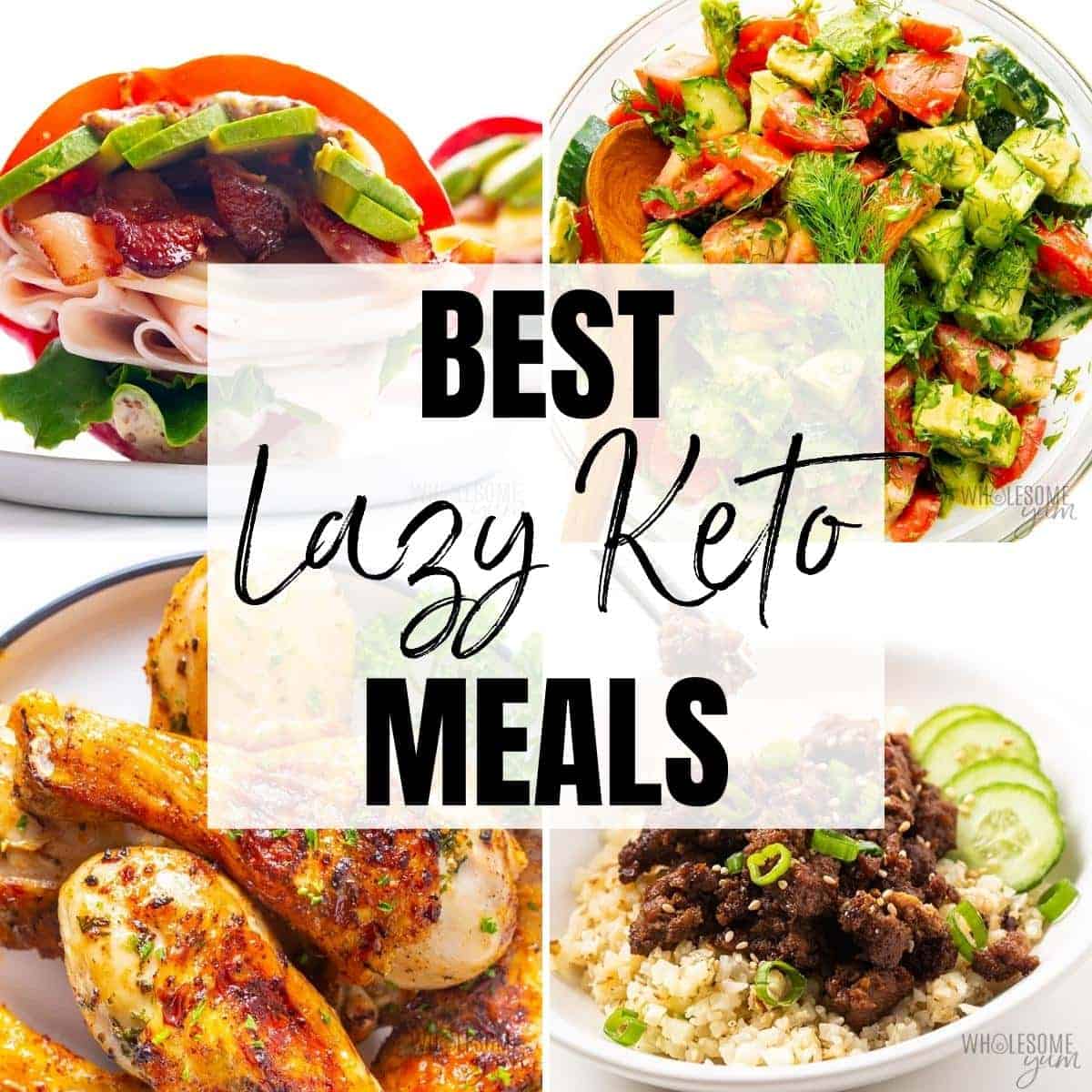Craving your favorite takeout but committed to your keto lifestyle? Imagine indulging in rich, flavorful pizza, aromatic Asian stir-fries, or zesty Mexican tacos without derailing your dietary goals. This guide unveils the secrets to creating delicious keto-friendly versions of your beloved takeout meals, transforming familiar favorites into healthy, satisfying dishes. Prepare to embark on a culinary journey where guilt-free indulgence meets nutritional excellence, transforming your kitchen into a haven of keto-friendly delights.
We’ll explore a range of popular takeout cuisines, offering detailed, step-by-step recipes and nutritional breakdowns for both the original and keto-adapted versions. Learn clever ingredient substitutions that maintain the taste and texture you crave while adhering to ketogenic principles. Discover the art of crafting a perfectly crispy keto pizza crust, mastering the flavors of authentic Asian dishes, and navigating the nuances of keto-friendly Mexican cuisine. Get ready to savor the taste of freedom—the freedom to enjoy your favorite takeout without compromise.
Step-by-Step Keto Recipe Creation
Crafting a keto-friendly pizza requires careful consideration of ingredients to maintain a low-carb, high-fat profile while still delivering that satisfying pizza experience. This recipe focuses on creating a crispy crust using almond flour and achieving a flavorful topping profile that complements the low-carb base. The result is a pizza that’s both delicious and aligns perfectly with ketogenic dietary guidelines.
Keto Pizza Crust Preparation
The foundation of any great pizza is the crust. This recipe utilizes almond flour, an excellent keto-friendly alternative to traditional wheat flour, for its low carbohydrate content and ability to create a satisfyingly crisp crust. The addition of mozzarella cheese adds richness and helps bind the ingredients together, contributing to the texture and flavor.
- Preheat your oven to 400°F (200°C). Line a baking sheet with parchment paper for easy removal.
- In a medium bowl, combine 1 cup almond flour, 1/2 cup grated mozzarella cheese, 1 large egg, 1 tablespoon olive oil, 1/2 teaspoon salt, and 1/4 teaspoon garlic powder. Mix thoroughly until a dough forms.
- Press the dough evenly onto the prepared baking sheet, forming a thin crust (about 1/8 inch thick). Use your hands or a rolling pin to achieve a consistent thickness.
- Prick the crust several times with a fork to prevent air bubbles from forming during baking.
- Bake for 12-15 minutes, or until the crust is golden brown and crisp. The edges should be slightly browned and firm to the touch.
Keto Pizza Topping Assembly
The toppings are where you can get creative while staying true to the keto principles. We’ll use a combination of flavorful, low-carb ingredients to create a balanced and satisfying pizza. The use of full-fat cheese is crucial for both flavor and the satisfaction of a creamy, rich topping.
- Spread a thin layer of your favorite keto-friendly pizza sauce (look for low-carb options or make your own using pureed tomatoes and spices) over the baked crust. Avoid overly sugary or carb-heavy sauces.
- Generously sprinkle shredded mozzarella cheese over the sauce. Mozzarella melts beautifully and provides a classic pizza experience.
- Add your choice of keto-friendly toppings. Suggestions include sliced mushrooms, pepperoni (check the carb count per slice), cooked bacon, spinach, or sliced bell peppers (use sparingly, as they contain some carbohydrates).
- Return the pizza to the oven for another 5-7 minutes, or until the cheese is melted and bubbly, and the toppings are heated through.
Rationale Behind Ingredient Choices
The selection of ingredients in this keto pizza recipe is deliberate. Almond flour provides a low-carb base for the crust, while the addition of cheese contributes to its texture and flavor. The choice of toppings focuses on low-carb vegetables and high-fat meats, maintaining the ketogenic principles of high fat, moderate protein, and very low carbohydrate intake. Full-fat cheeses are essential to deliver a satisfying, creamy texture and rich flavor without compromising the dietary goals. The use of olive oil adds healthy fats and enhances the overall flavor profile.
Keto Takeout Copycat
Embark on a culinary adventure, recreating the vibrant flavors of your favorite Asian takeout dishes, all while staying true to your ketogenic lifestyle. These recipes offer delicious alternatives, substituting traditional high-carb ingredients with keto-friendly options that deliver satisfying textures and authentic tastes. Prepare to tantalize your taste buds without derailing your dietary goals.
Keto Sesame Ginger Beef Stir-Fry
This recipe captures the essence of a classic takeout stir-fry, replacing noodles with hearty vegetables and a flavorful, low-carb sauce. The rich sesame ginger flavor profile is intensely satisfying and perfectly complements the tender beef.
Ingredients
1 lb beef sirloin, thinly sliced
1 tbsp sesame oil
1 red bell pepper, thinly sliced
1 green bell pepper, thinly sliced
1 cup broccoli florets
1/2 cup sliced shiitake mushrooms
1/4 cup soy sauce (low sodium)
2 tbsp rice vinegar
2 tbsp sesame oil
1 tbsp grated fresh ginger
1 tbsp honey or keto-friendly sweetener
1 tsp cornstarch or xanthan gum (for thickening, optional)
Sesame seeds for garnish
Instructions
Heat 1 tbsp sesame oil in a wok or large skillet over medium-high heat. Add beef and stir-fry until browned. Remove beef from skillet and set aside. Add bell peppers, broccoli, and mushrooms to the skillet and stir-fry for 3-5 minutes, until slightly tender-crisp. In a small bowl, whisk together soy sauce, rice vinegar, 2 tbsp sesame oil, ginger, and sweetener. If using, whisk in cornstarch or xanthan gum until smooth. Return beef to the skillet. Pour sauce over beef and vegetables. Bring to a simmer and cook for 2-3 minutes, or until sauce has thickened. Garnish with sesame seeds. Serve immediately.
Nutritional Information (per serving, approximate)
Calories: 350-400
Net Carbs: 5-7g
Fat: 25-30g
Protein: 30-35g
Keto Cauliflower Fried “Rice”
This recipe cleverly substitutes cauliflower rice for traditional rice, creating a surprisingly similar texture and absorbing the rich flavors of the stir-fry sauce beautifully. The vibrant colors and textures make it a visually appealing and satisfying keto-friendly meal.
Ingredients
1 head cauliflower, riced
2 tbsp coconut oil
1/2 cup chopped onion
1/2 cup chopped carrots
1/2 cup frozen peas
1/4 cup soy sauce (low sodium)
2 tbsp rice vinegar
1 tbsp sesame oil
1 tsp ground ginger
1 clove garlic, minced
2 scrambled eggs
Chopped green onions for garnish
Instructions
Heat coconut oil in a wok or large skillet over medium heat. Add onion and carrots and sauté for 3-5 minutes, until softened. Add riced cauliflower and cook for 5-7 minutes, stirring occasionally, until tender. Stir in peas, soy sauce, rice vinegar, sesame oil, ginger, and garlic. Cook for another 2-3 minutes. Gently fold in scrambled eggs. Garnish with chopped green onions. Serve immediately.
Nutritional Information (per serving, approximate)
Calories: 280-320
Net Carbs: 5-7g
Fat: 20-25g
Protein: 15-20g
Keto Shrimp and Cabbage “Dumplings”
These delightful “dumplings” use large cabbage leaves as wrappers, embracing a low-carb alternative to traditional dough. The succulent shrimp filling, infused with Asian spices, offers a burst of flavor in every bite. The visual appeal mimics the traditional dumplings surprisingly well.
Ingredients
1 lb shrimp, peeled and deveined
1/2 head green cabbage, large leaves separated
1/4 cup chopped scallions
2 tbsp soy sauce (low sodium)
1 tbsp rice vinegar
1 tbsp sesame oil
1 tsp grated fresh ginger
1 clove garlic, minced
Coconut aminos (optional, for extra umami)
Keto-friendly dipping sauce of choice
Instructions
In a bowl, combine shrimp, scallions, soy sauce, rice vinegar, sesame oil, ginger, garlic, and coconut aminos (if using). Gently mix to combine. Blanch cabbage leaves briefly in boiling water to soften slightly. Place a spoonful of shrimp mixture onto the center of each cabbage leaf. Fold the leaf over the filling to create a dumpling shape. You can secure with toothpicks if needed. Steam dumplings for 8-10 minutes, or until shrimp is cooked through. Serve with your favorite keto-friendly dipping sauce.
Nutritional Information (per serving, approximate)
Calories: 180-220
Net Carbs: 3-5g
Fat: 10-15g
Protein: 20-25g
Comparing Keto and Traditional Takeout Recipes

Understanding the nutritional differences between traditional takeout and their ketogenic counterparts is crucial for making informed dietary choices. This comparison highlights the significant variations in macronutrient composition and potential health impacts. By analyzing specific examples, we can better grasp the implications of choosing one over the other.
Nutritional Profile Comparison of Keto and Traditional Takeout Recipes
The following table details the nutritional profiles of five pairs of traditional takeout dishes and their ketogenic adaptations. Note that these values are approximate and can vary based on specific ingredients and preparation methods. The key differences highlighted emphasize the shifts in macronutrient ratios and potential impacts on satiety, energy levels, and overall health.
| Recipe Name | Traditional Nutritional Information (per serving) | Keto Nutritional Information (per serving) | Key Differences |
|---|---|---|---|
| Chicken Stir-fry | Calories: 600, Fat: 20g, Carbs: 70g, Protein: 40g | Calories: 550, Fat: 40g, Carbs: 5g, Protein: 45g | Significantly reduced carbohydrates, increased fat; higher protein in keto version; potential for increased satiety and sustained energy in keto version. |
| Pizza | Calories: 750, Fat: 30g, Carbs: 90g, Protein: 30g | Calories: 600, Fat: 45g, Carbs: 5g, Protein: 35g | Dramatic reduction in carbohydrates, increased fat; maintains similar protein levels; keto version likely to be lower in glycemic index and less likely to cause blood sugar spikes. |
| Fried Rice | Calories: 500, Fat: 25g, Carbs: 60g, Protein: 20g | Calories: 450, Fat: 35g, Carbs: 5g, Protein: 25g | Substantial carbohydrate reduction, increased healthy fats; slightly higher protein; keto version offers a lower glycemic load, potentially reducing insulin resistance. |
| Beef Tacos | Calories: 400, Fat: 15g, Carbs: 40g, Protein: 30g | Calories: 450, Fat: 30g, Carbs: 5g, Protein: 35g | Significant carbohydrate reduction, primarily through the use of low-carb tortillas or lettuce wraps; increased healthy fats; keto version improves satiety and may aid in weight management. |
| Cheeseburger | Calories: 650, Fat: 35g, Carbs: 40g, Protein: 30g | Calories: 600, Fat: 45g, Carbs: 5g, Protein: 35g | Reduced carbohydrates, mainly from the bun replacement; increased healthy fats; slightly higher protein; keto version focuses on maximizing fat intake while maintaining protein levels. |
Potential Health Implications of Keto vs. Traditional Takeout
The substantial differences in macronutrient composition between traditional and keto takeout recipes translate to significant potential health implications. Traditional takeout meals, often high in refined carbohydrates and unhealthy fats, can contribute to weight gain, insulin resistance, and increased risk of chronic diseases like type 2 diabetes and heart disease. The keto adaptations, prioritizing healthy fats and moderate protein while minimizing carbohydrates, can promote weight loss, improved blood sugar control, and increased energy levels. However, it’s important to note that individual responses to ketogenic diets can vary, and consulting a healthcare professional before starting any new diet is always recommended.
From the satisfying crunch of a keto pizza crust to the vibrant flavors of Asian-inspired stir-fries and the spicy kick of Mexican keto-tacos, this culinary adventure proves that healthy eating doesn’t mean sacrificing taste. By mastering the art of ingredient substitution and embracing keto-friendly cooking techniques, you can recreate your favorite takeout meals while staying true to your dietary goals. This journey is not just about recipes; it’s about empowerment, showing you that a keto lifestyle can be delicious, diverse, and incredibly satisfying. So, ditch the takeout guilt and embrace the flavorful world of keto copycat cuisine!
Key Questions Answered
Can I use any type of cheese for the keto pizza crust?
While mozzarella is a popular choice, other low-moisture cheeses like cheddar or parmesan can also work well. Experiment to find your favorite!
Are there any specific brands of keto-friendly ingredients I should look for?
Not necessarily. Focus on choosing ingredients that fit your macros and preferences. Many common grocery store brands offer suitable options.
How long do these keto copycat meals last in the refrigerator?
Most of these meals will last 3-4 days in the refrigerator when stored properly in airtight containers.
Can I freeze these keto recipes?
Yes, many of these recipes freeze well. Allow them to cool completely before freezing for best results.


